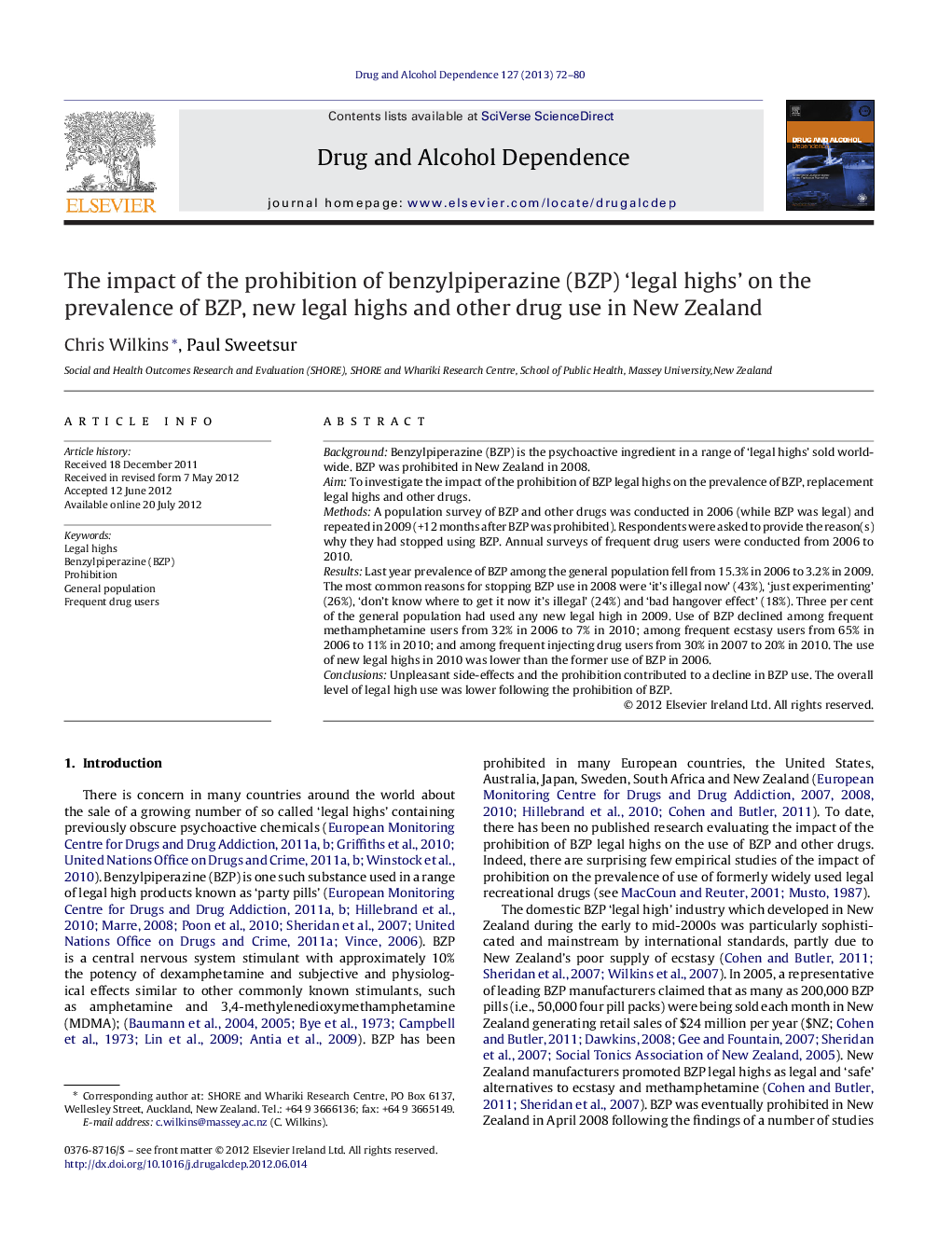| Article ID | Journal | Published Year | Pages | File Type |
|---|---|---|---|---|
| 1069997 | Drug and Alcohol Dependence | 2013 | 9 Pages |
BackgroundBenzylpiperazine (BZP) is the psychoactive ingredient in a range of ‘legal highs’ sold worldwide. BZP was prohibited in New Zealand in 2008.AimTo investigate the impact of the prohibition of BZP legal highs on the prevalence of BZP, replacement legal highs and other drugs.MethodsA population survey of BZP and other drugs was conducted in 2006 (while BZP was legal) and repeated in 2009 (+12 months after BZP was prohibited). Respondents were asked to provide the reason(s) why they had stopped using BZP. Annual surveys of frequent drug users were conducted from 2006 to 2010.ResultsLast year prevalence of BZP among the general population fell from 15.3% in 2006 to 3.2% in 2009. The most common reasons for stopping BZP use in 2008 were ‘it's illegal now’ (43%), ‘just experimenting’ (26%), ‘don’t know where to get it now it's illegal’ (24%) and ‘bad hangover effect’ (18%). Three per cent of the general population had used any new legal high in 2009. Use of BZP declined among frequent methamphetamine users from 32% in 2006 to 7% in 2010; among frequent ecstasy users from 65% in 2006 to 11% in 2010; and among frequent injecting drug users from 30% in 2007 to 20% in 2010. The use of new legal highs in 2010 was lower than the former use of BZP in 2006.ConclusionsUnpleasant side-effects and the prohibition contributed to a decline in BZP use. The overall level of legal high use was lower following the prohibition of BZP.
